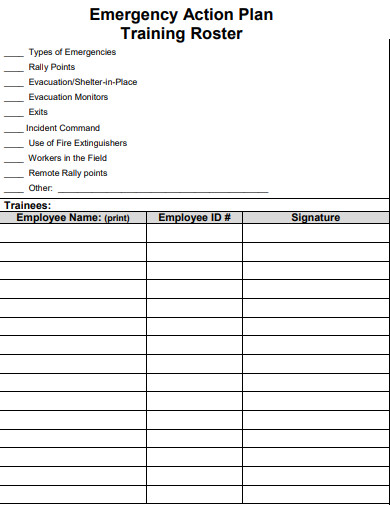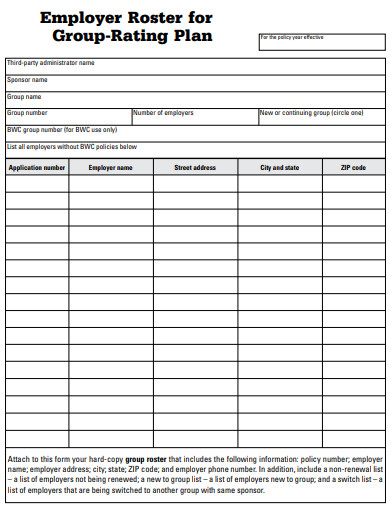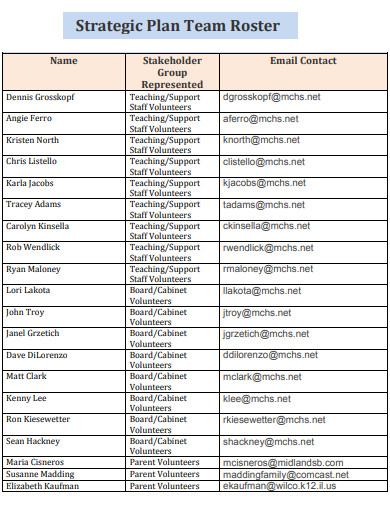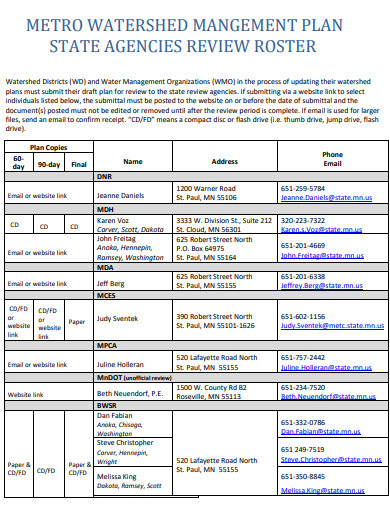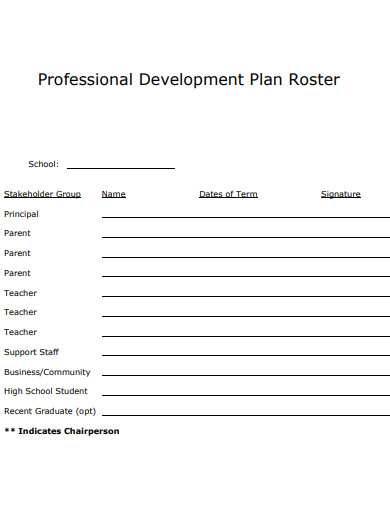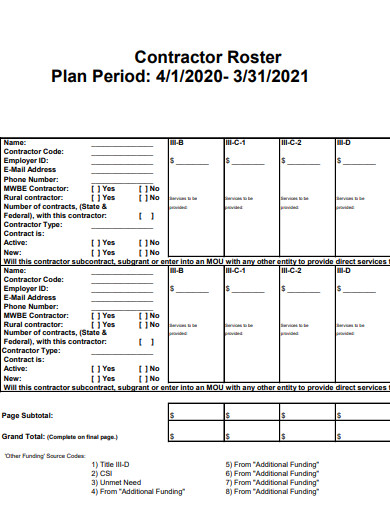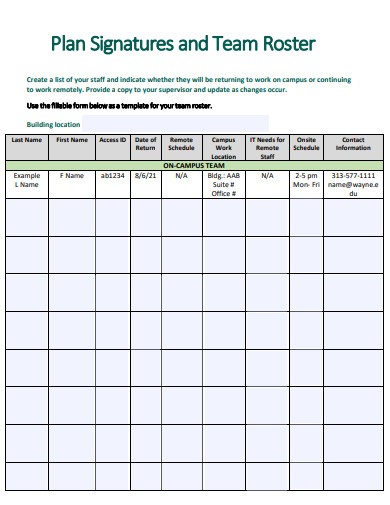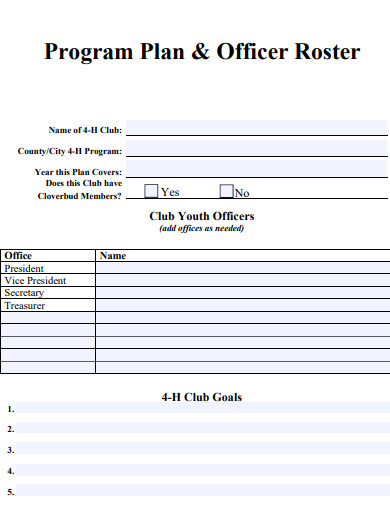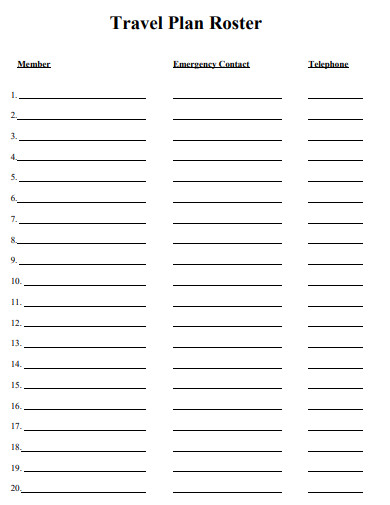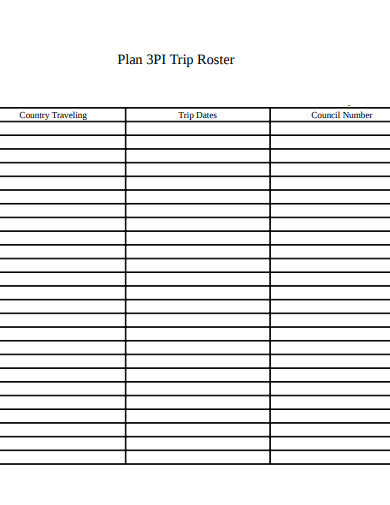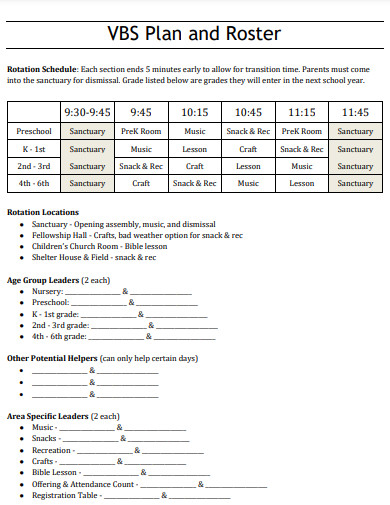Imagine running a company with employees that do not even follow a daily schedule to work. As a business manager, you would definitely see the end of your company even before you can even push it towards the peak. That is why it is very important to have a strict but doable schedule for employees to ensure that your company’s operations will run smoothly, as well as not worry about having enough workers to perform different tasks. In this article, we will provide you with information about roster planning and help you create an effective schedule that you can certainly use for a longer period of time.
10+ Roster Plan Samples
1. Training Roster Action Plan
2. Employer Roster Plan
3. Team Roster Strategic Plan
4. Roster Management Plan
5. Roster Development Plan
6. Contractor Roster Plan
7. Signatures and Team Roster Plan
8. Officer Roster Plan
9. Travel Roster Plan
10. Trip Roster Plan
11. Sample Roster Plan
What Is a Roster Plan?
A roster plan, which is more popularly known as the employee shift schedule, is a document used by managers or supervisors to disseminate employee work shift information. It is typically a grid sheet where you can write down the names of the employees, their assigned schedule of work, time of shift, department or branch where the employees would be assigned for that particular period of time, and the details of their task.
A roster plan is commonly used in workplaces where employees work on a scheduled basis, such as restaurants, malls, or government offices. With the roster plan, it becomes easier for the work manager to supervise the duties of the employees on that given day, as well as see to it that any and all responsibilities are taken care of before the shift ends.
How To Create an Effective Roster Plan?
Because there are many institutions, companies, and agencies that utilize the roster plan for various work purposes, the way it’s done also changes depending on the circumstances. However, there are certain factors that you should consider while in the process of creating your plan which are written below.
1. Format Your Roster Without the Names
When rostering shift schedules, the first thing you need to do is think about what goes into the paper. So when you make your grids, you can count the columns for labels, giving you more time to study what you should write there and what is not needed. If you want to create multiple roster plans for different workers and departments, this is more recommendable. Save space for the names but leave them blank.
2. Ask the Employees About Their Preferred Schedule
The next thing you need to do after preparing your roster form is to tell your employees about it, especially if you have made changes to the shifts. This way, you can ask them about their preferred schedule based on the roster you’ve made and you can adjust the schedule accordingly without hassle. If you have part-time employees, you’ll be able to know when they are available to report to duty.
3. Assign Skilled Workers On Busy Schedules
If there are days when your store, company, or establishment is busy, it is always a great move to put your best workers on the frontline. So when you assign your employees to their new shift schedule, always write down the names of your most formidable and experienced employees on busy shifts. This method will also help newbies learn more from their colleagues while assisting them during the day (or night)
4. Make Your Shift Schedule Flexible
There are times when an employee had to excuse themselves from work due to reasons such as sick leave, emergencies, family problems, school activities, and other important personal matters. That is why you should always have a backup employee included in the schedule to cover up for the ones who are unavailable for the day. Open the schedule for sudden day-offs and on-call requests via online means.
What is the best time to post a roster schedule?
The best time to schedule shifts is a week before the effective date of the roster. This gives your employees time to process the change in their work schedule. If they have concerns and appeals about the schedule, then you can have more time to change them including day-offs and leaves.
Why is rostering important in business?
Rostering provides owners or managers with the opportunity to assess the availability of their employees in accordance with the demands of the business needs. With a weekly or monthly schedule, you can adjust the costs of employee wages as well as other business budgets.
What makes a roster plan effective?
Manager-to-employee coordination, organization, attention to detail, and commitment to work—with these factors, your roster plan will become more effective upon implementation.
A roster plan’s function is not just for scheduling, in fact, it can aid businessmen to track employee performance quite efficiently. With proper planning, discussion, and leeway for changes, making a roster plan is easier for your business management needs. If you want to create roster plans for your employees, you can start by checking out our wide array of available templates.
Related Posts
FREEE 10+ Coach Schedule Samples in PDF
FREE 9+ Sample Staff Schedule Templates in PDF MS Word
FREE 9+ Sample Roster Templates in PDF MS Word | Excel
FREE 24+ Sample Training Schedule Templates in MS Word PDF ...
FREE 11+ Sample School Schedule Templates in PDF MS Word
FREE 6+ Volunteer Schedule Samples and Templates in PDF MS ...
FREE 7+ Sample Class Roster Templates in PDF
FREE 3+ Babysitter Checklist with Schedule Samples and ...
FREE 7+ Sample Sports Roster Templates in PDF MS Word
FREE 10+ Nursing Schedule Samples & Templates in PDF MS ...
FREE 24+ Sample Payment Schedules in PDF MS Word
FREE 21+ Sample Cleaning Schedules in PDF MS Word
FREE 11+ Workout Planner Templates in PDF MS Word
FREE 3+ Restaurant Staffing Plan Samples in PDF MS Word ...
FREE 10+ Week Schedule Samples in PDF MS Word

